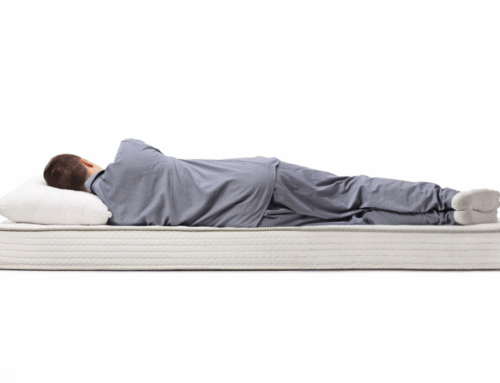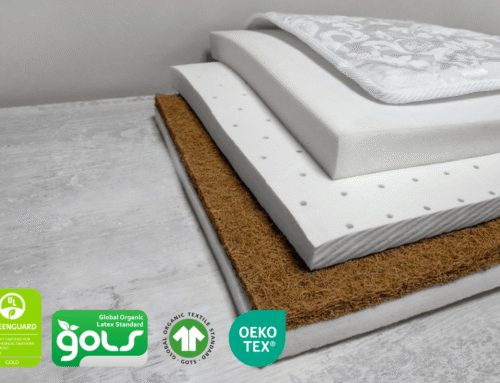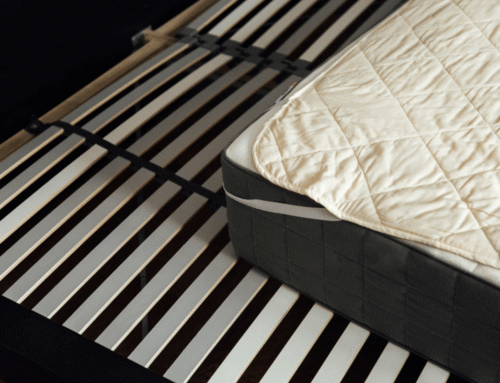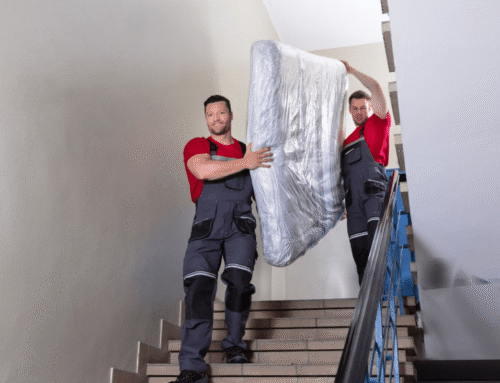Moving a king-size mattress might seem daunting, but with some planning, it’s simpler than you’d think. After all, what is a king size bed if not a large, luxurious space for restful nights? Its size is part of the appeal, but it’s also why moving it takes a bit more effort.
First, let’s talk about what size is a king size mattress. It’s 76 inches wide and 80 inches long, offering plenty of space for couples or anyone who loves to stretch out. If you’ve ever wondered, how much bigger is a king mattress than a queen, the answer is about 16 inches wider—that extra space is great for sleeping, but it means moving it requires some preparation. But how big is a king size bed exactly? King mattresses measure 76 inches wide and 80 inches long, making them one of the largest standard mattress sizes available.
If you want to know what the biggest king size bed is, that honor goes to oversized options like the Alaskan king, which measures a massive 108 inches by 108 inches. Start by measuring your doorways and hallways to ensure the mattress can fit. Grab a mattress bag to protect it during the move, and consider folding it (if it’s foam) or using straps to make handling easier. With a clear plan and the right tools, you’ll have it in its new spot in no time.
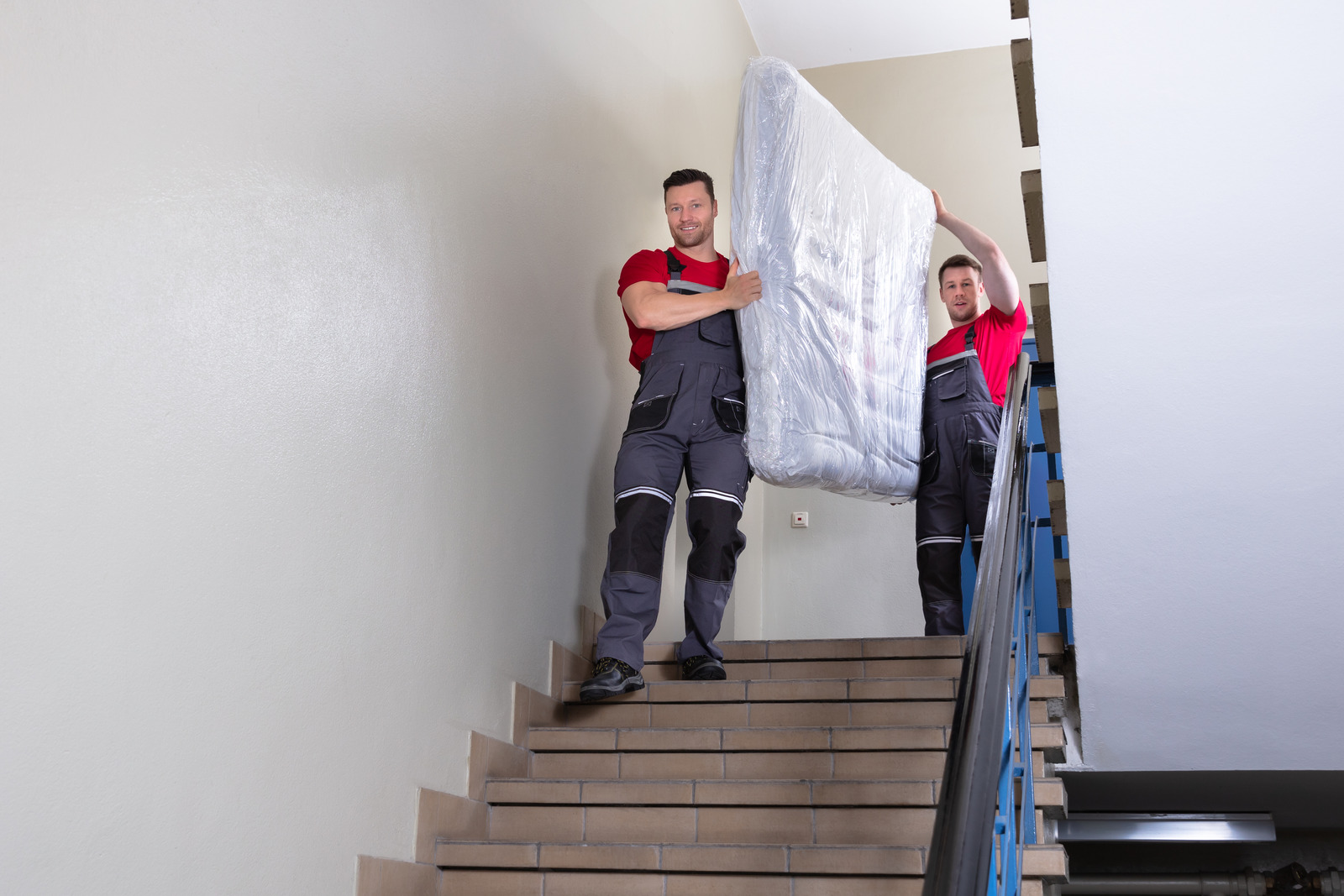
Moving a king-size mattress doesn’t have to be overwhelming if you’re prepared. Start by stripping the bed—remove sheets, pillows, and mattress toppers. Packing these items separately not only makes the mattress lighter but also keeps your bedding clean and safe during the move.
Take a moment to inspect the mattress for any stains, tears, or damage. This quick check is especially useful if the mattress is valuable and you want to ensure it arrives in the same condition.
But how do we know how much does a king size mattress weigh? Most king-size mattresses weigh between 130 and 180 pounds, depending on the materials used. Memory foam mattresses, known for their dense construction, are usually on the heavier side, while traditional innerspring models tend to be lighter.
Knowing the weight helps you plan for lifting and moving—because let’s face it, this isn’t a job for one person. Grab a friend, use lifting straps if needed, and make sure you have a clear path to avoid unnecessary strain. With a little preparation and the right approach, transporting your king-size mattress can be far easier than it seems.
Protecting your king-size mattress during a move is essential—it’s a significant investment, after all. But if you’re wondering how much is a king size mattress, it depends on the brand and type, it can cost anywhere from $600 to over $2,000, so it’s worth taking the time to shield it from potential damage.
Start by placing the mattress in a mattress bag or wrapping it in breathable plastic. This protects it from dirt, moisture, and tears during transport. Secure the cover with packing tape to ensure it stays in place throughout the move.
One important tip: avoid using airtight plastic wraps. While it might seem like a good idea, they can trap moisture inside, creating the perfect environment for mold and mildew to develop—definitely not something you want on your mattress. A breathable covering allows airflow while still keeping the mattress clean and safe.
A little effort here goes a long way. Properly protecting your mattress not only keeps it in great condition but also gives you peace of mind during the move. Whether you’re heading across town or across the country, taking these steps will ensure your mattress arrives as pristine as the day you bought it.
Figuring out how to move a king size mattress is all about using the right tools to make the job easier and safer. A dolly or cart is a game-changer for handling heavy items like mattresses. Simply place the mattress on the dolly and secure it with straps or rope. This keeps it steady and prevents it from slipping while you navigate doorways, hallways, or stairs.
If you’re lifting and carrying the mattress instead, moving straps are a great alternative. These straps help distribute the weight evenly across your body, taking the strain off your back and making the process much less daunting.
Whether you’re using a dolly or straps, having a second person to help is always a smart move when dealing with something this bulky.
When it’s time to load the mattress into your vehicle, ratchet straps or rope are essential for keeping it securely in place during transit. A well-secured mattress won’t shift or get damaged en route. With the right equipment and a little preparation, moving a king-size mattress doesn’t have to be a stressful task—it’s all about working smarter, not harder.

Considering how wide is a king size bed—it spans 76 inches—and its length of 80 inches, most standard vehicles won’t suffice. To transport it easily, a 16-foot or 26-foot truck is recommended. If you’re dealing with limited vehicle space, you might wonder whether folding is an option.
Foam mattresses can be carefully folded for short periods without damage, but spring or coil mattresses should remain flat or upright. Long-term folding of spring mattresses can lead to structural damage, affecting their comfort and support.
Positioning your mattress properly during a move is key to protecting it and making the process easier. When loading a king-size mattress, always position it lengthwise on its side, especially if it’s a spring or coil model.
This method prevents unnecessary strain on the mattress’s internal structure, ensuring it stays in great shape. Plus, this position makes it easier to navigate through narrow doorways, hallways, or staircases.
You might also be wondering, how tall is a king size bed? Including the frame, the total height typically ranges from 20 to 30 inches, depending on the model. This extra bit of height can be important to keep in mind when planning your move, especially when measuring doorways or clearing tight spaces.
Knowing the dimensions of a king size bed—width, length, and height—helps you avoid surprises and ensures everything fits smoothly into its new home. By positioning the mattress carefully and planning for its full size, you can simplify the moving process and protect your investment. With a bit of preparation and care, moving even a king-size mattress can be done without the hassle or worry of damaging your bed!

Folding a mattress might seem like a good idea when space is tight, but it’s not always the best solution. Foam mattresses are pretty forgiving—they can be carefully folded for short periods without any permanent damage. This makes them a great option if you’re trying to fit one into a small vehicle for a quick move. However, spring mattresses are a different story.
Their internal coils and structure don’t handle bending well, and folding them can lead to lasting damage, like bent springs or sagging. If possible, it’s better to keep spring mattresses flat or upright during transport to protect their integrity.
On the other hand, if your goal is to get rid of your king mattress, there are several eco-friendly ways to do so. Donation centers often accept mattresses in good condition, giving them a second life with someone in need.
Recycling programs are another great option, allowing materials like foam and metal springs to be reused. If neither of those works, check with your local bulk trash pickup for proper disposal guidelines. No matter the method, a little extra effort goes a long way in making sure your mattress doesn’t end up in a landfill unnecessarily.
Here are some additional tips to make the process even smoother:
- Invest in Protection: Always cover your mattress with a protective bag or wrap.
- Use the Right Tools: Moving straps, dollies, and ratchet straps are essential.
- Lift Safely: If the mattress feels too heavy, enlist help to avoid injury.
- Plan for Space: Know the dimensions of your mattress and vehicle.
- Avoid Long-Term Folding: If you must fold, limit the time to avoid damage.
Choosing the right king-size bed ultimately comes down to your lifestyle, bedroom size, and budget. If you’re considering an upgrade to an oversized option like the Alaskan King, the payoff is unparalleled luxury and space. However, such a large mattress requires thoughtful planning for transport, setup, and bedroom arrangement.
Knowing the dimensions of a king size bed is key to making the right decision. A standard king measures 76 inches by 80 inches, while an Alaskan King stretches to an impressive 108 inches by 108 inches, providing significantly more room.
Whether you’re sticking with a standard king or upgrading to a massive Alaskan King, understanding these dimensions ensures you’ll find a bed that fits your needs perfectly. For couples, families, or anyone who loves extra space, bigger can certainly be better—but only if it complements your space and lifestyle. Take the time to choose a bed that brings you both comfort and convenience.


